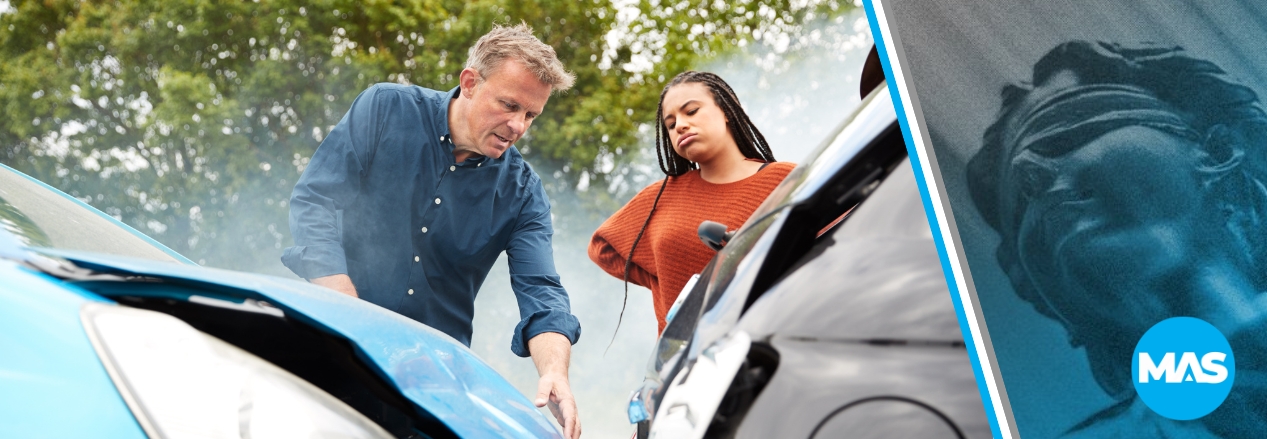Texas is not a no-fault insurance state. Instead, Texas operates under the at-fault system, which significantly impacts how car accident claims are processed and who is responsible for covering the damages. When it comes to auto accidents and insurance claims, understanding the difference between at-fault and no-fault states is crucial.

What Is a No-Fault State?
A no-fault insurance state operates under a different set of principles compared to at-fault states when it comes to car accidents. In a no-fault system, regardless of who caused the collision, drivers typically file claims with their own insurance companies to recover compensation for medical expenses and other covered losses incurred as a result of the accident.
Understanding the At-Fault System
In an at-fault state like Texas, the driver who is found responsible for causing an accident is also responsible for covering the damages. This is done through their insurance policy. Essentially, the at-fault driver's insurance company will pay for the medical bills, property damage, and other related expenses of the other parties involved in the accident.
Some key factors to consider in an at-fault-system include the following:
- Liability determination. Accident fault is determined based on the specifics of the accident. Police reports, dashcam footage, witness statements, photos, and other evidence are used to establish who was at fault.
- Comparative fault. Texas follows a modified comparative negligence rule. This means that an injured party's recovery may be reduced based on their own contribution to the accident. For instance, imagine a scenario where you are stopped at a red light and, while looking at your phone for a brief moment, you are rear-ended by another driver. A portion of the fault for the accident may be attributed to you since you were driving while distracted. Let’s say the court decides you were 20% at fault; you would still be eligible to file a claim against the other driver's insurance company. However, any awarded damages would be reduced by your share of the blame. Therefore, if your total damages amounted to $10,000, you would receive $8,000 in compensation.
- Insurance claim options. After an accident, you have several routes for seeking compensation:
- You can file a claim directly with the at-fault driver's insurer.
- You can file a claim with your own insurer if the at-fault party is uninsured or underinsured.
- If the insurance coverage is insufficient or the damages exceed policy limits, you may opt to sue the at-fault driver directly in court.
Understanding what it means for Texas to be an at-fault state is crucial for drivers. It affects how claims are filed and who is responsible for damages after an accident.
Texas Statutes Related to At-Fault Accidents
Several Texas statutes govern the at-fault insurance system. Key statutes include:
- Texas Motor Vehicle Safety Responsibility Act (Texas Transportation Code § 601.001 et seq.). This act requires all drivers to carry liability insurance that meets minimum coverage requirements. This ensures that drivers can cover the costs of damages if they are found to be at fault in an accident.
- Uninsured/Underinsured Motorist Coverage (Texas Insurance Code § 1952.101 et seq.). While not mandatory, Texas insurance policies often include provisions for uninsured or underinsured motorist coverage, protecting drivers if they are involved in an accident with a driver who lacks sufficient insurance.
Minimum Car Insurance Coverage Requirements
The minimum liability coverage in Texas is:
- $30,000 for bodily injury per person,
- $60,000 for bodily injury per accident,
- $25,000 for property damage.
However, these amounts may not be sufficient to cover all damages, especially in serious accidents. Therefore, drivers should consider purchasing higher limits and additional coverage options.
Different Types of Car Insurance | Additional Coverage
Besides liability and uninsured/underinsured motorist coverage, Texas offers various other types of auto insurance coverage, including:
- Collision coverage, which covers the cost of the repair or replacement of your car if it is damaged in an accident with another vehicle or object.
- Comprehensive coverage, which covers the repair or replacement of your car for damages caused by non-collision events like theft, fire, vandalism, or weather-related incidents.
- Personal Injury Protection (PIP), which pays for lost wages and accrued medical expenses regardless of accident fault.
- Medical payment (MedPay) coverage, which pays for your medical expenses and those of your passenger.
Data on Car Accidents in Texas
When looking at reported crashes in 2023, the data shows that:
- One person was killed in an auto accident every two hours and three minutes.
- One person was injured in an accident every two minutes and six seconds.
- One crash occurred every 56 seconds.
The following statistics provide even more insight into the frequency and severity of accidents in the state:
- Crashes leading to serious injuries. In 2023, 18,752 sustained serious injuries in vehicular crashes. There were 15,219 crashes that led to these injuries.
- Crashes leading to death. In 2023, 4,283 died in motor vehicle accidents.
- People injured overall. In 2023, 250,335 people suffered injuries in vehicular accidents.
Drivers can better protect themselves and their financial well-being by being informed about the relevant statutes and accident data and ensuring adequate insurance coverage. For more information on Texas vehicle crashes, read this report from the Texas Department of Transportation.
Common Causes of Accidents | Why Drivers May Be At-Fault

Unfortunately, as we can see from the accident statistics, accidents are a common occurrence, and while some are unavoidable, many can be prevented. In traffic accidents, driver behavior is a significant contributing factor.
Some common causes of accidents attributable to drivers:
- Distracted driving. Using mobile devices, eating, or engaging in conversations with passengers can divert a driver's attention from the road, increasing the risk of accidents.
- Drowsy driving. Fatigue can impair judgment and reaction time just as much as alcohol or drugs.
- Impaired driving. Drivers who are under the influence of drugs or alcohol can have slower reaction times and poor judgment, posing a serious threat to themselves and others on the road.
- Reckless driving. Some examples of this behavior include aggressive maneuvers, tailgating, and failing to yield the right of way.
- Speeding. Exceeding the speed limit reduces a driver's ability to react to hazards and increases the severity of collisions.
How an Attorney Can Help
If involved in an accident, consulting with an experienced attorney can strengthen your claim. An experienced attorney can be your strongest advocate throughout the entire claim process.
In addition to helping you understand your legal rights and options in an at-fault insurance state, they can offer counsel and help in the following ways:
- Document your damages
- Determine the monetary value of your fiscal losses and pain and suffering
- Investigate the accident and analyze causation and liability
- Collect evidence
- Negotiate with insurance agents
- Represent you in court if needed
Consult with Our Firm
If you've been injured in a car accident, MAS Law is here to help you pursue compensation. Schedule a free case consultation with our award-winning lawyers today by calling (972) 460-9339.


